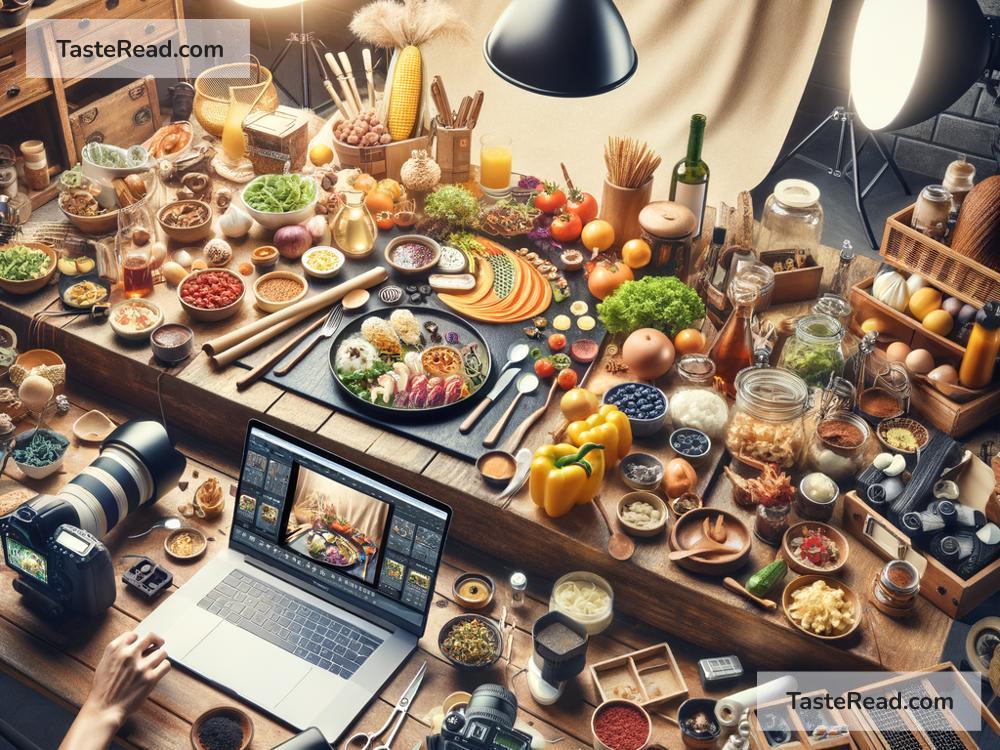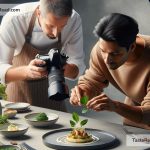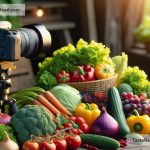Title: Behind the Scenes of Food Photography: Workflow and Preparation
Food photography is an art form that tempts your taste buds without a single flavor touching your tongue. Capturing the perfect image of a dish requires more than just snapping a picture on your smartphone. It involves a meticulous workflow and preparation process that is often unseen. Let’s dive into the behind-the-scenes world of food photography and explore the steps professionals take to create those mouth-watering images.
The Idea Phase
Every great photograph starts with an idea. Food photographers often begin with a concept phase, where they decide on the theme, mood, and story they want the food to tell. This could be anything from a cozy winter soup to a vibrant summer salad. The idea phase is crucial because it determines the direction of the entire shoot. It’s where creativity blooms and sets the stage for the preparation and execution.
Preparing the Ingredients
Once the concept is nailed down, the next step is to prepare the ingredients. This stage is more than just gathering what you need; it involves selecting the best-looking produce, the most appealing cuts of meat, and the freshest herbs. The appearance of each ingredient plays a significant role in the final image. Therefore, food photographers spend a considerable amount of time picking out the perfect specimens. They might visit multiple markets or stores to find exactly what they need.
Setting the Scene
With the ingredients ready, the next step is setting the scene. This involves selecting the right backdrop, surface, and props that complement the food’s theme without overpowering it. Each element must contribute to the story you’re trying to tell. For instance, a rustic bread loaf might be best photographed on a worn wooden table to enhance its homemade feel, while a sleek, modern dessert would look stunning against a clean, minimalist background.
Props, such as cutlery, dishes, and linens, are chosen with care. The color, texture, and style of each prop can significantly affect the composition and mood of the photograph. Food photographers often have a prop closet filled with a variety of options to suit different themes and concepts.
Lighting and Composition
Lighting is arguably the most crucial component of food photography. It can make or break a photo. Natural light is preferred for its ability to bring out the true colors and textures of the food, creating a more appealing and appetizing image. However, professional photographers also know how to manipulate artificial light to mimic natural light when necessary.
Composition refers to how the elements in the photo are arranged. The rule of thirds, leading lines, and framing are just a few of the techniques used to create a balanced and engaging image. The goal is to guide the viewer’s eye through the photograph, focusing on the most important elements, typically the food.
The Shooting Process
With the scene set and lighting adjusted, it’s time to start shooting. Food photographers often take multiple shots from different angles and with various compositions to find the best one. This might involve moving the camera, adjusting the food, or tweaking the props. It’s a trial and error process that requires patience and creativity.
During the shoot, the food needs to look its best, which sometimes means employing little tricks. For example, a food stylist might use a blow torch to make a steak look juicier or apply glycerin to fruit to make it appear freshly washed. These are industry secrets that help create the perfect image.
Post-Production
Once the shooting is done, the process isn’t over. Post-production plays a vital role in food photography. This is where the images are edited to correct color, adjust lighting, or retouch imperfections. The aim is to make the food look as appetizing as possible without altering its inherent qualities. This delicate balance requires a skilled hand and a good eye for detail.
The Final Product
After all the preparation, shooting, and editing, the final product is an image that looks effortless but is the result of meticulous planning and hard work. A successful food photograph is one that tells a story, evokes emotion, and most importantly, makes the viewer hungry.
Conclusion
Food photography may seem straightforward, but it involves a complex workflow and preparation process. From conceptualizing the idea to post-production editing, each step is vital in creating those captivating images we see in cookbooks, magazines, and social media. The next time you come across a stunning food photograph, remember the effort, creativity, and passion that went into making it.


